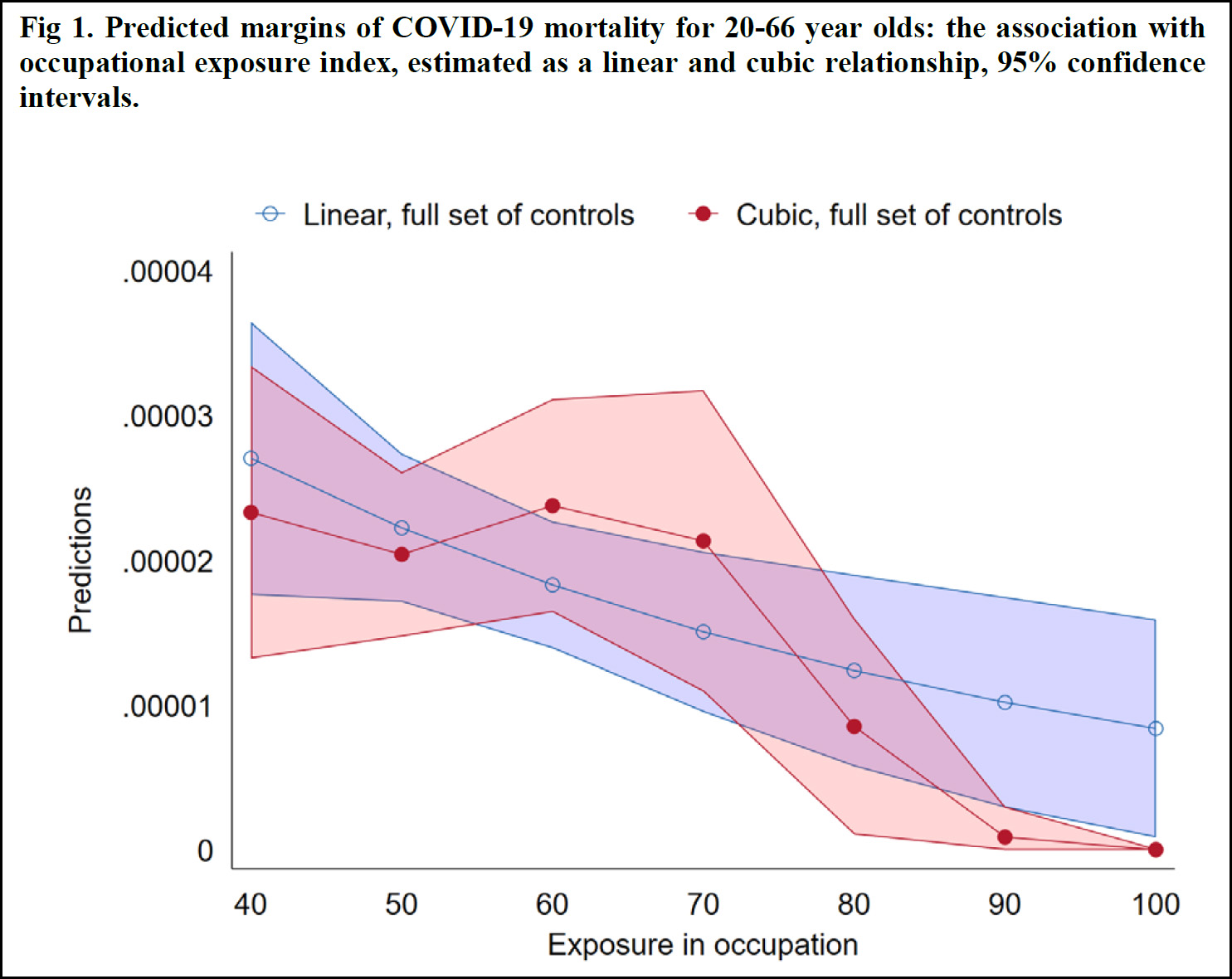Via Tyler Cowen, here’s a remarkable finding from a team of researchers at Stockholm University. The authors looked at COVID-19 mortality data by occupational type to see how much difference it made to work in an “essential” job that required a lot of contact with the public. Here’s the result:

On the left are occupations with only modest exposure to the public. On the right are those with high exposure. The range of 40-100 contains 97 percent of all occupations.
The authors say the red line is the most meaningful one, and it’s essentially flat from 40 through 70, meaning that mortality didn’t change at all within that range. From 80-100, which includes a lot of health care workers, mortality actually goes down:
The red line shows that the association between mortality and exposure is relatively flat, with a slight increase around a score of 60 on the exposure index (e.g., construction worker) when adjusting for socioeconomic and demographic characteristics. A more marked decrease is observed at the highest exposures of 80-100, which is where the majority of occupations in health care are located. Despite what might be expected, we find very little difference in COVID-19 mortality risk by occupational exposure and the differences that do exist are in the opposite direction to expectations at the highest exposures.
On a more granular level, the study finds that bus and taxi drivers are at higher risk, while schoolteachers are at low risk even though Swedish schools were open at the time. It’s worth noting, however, that this study probably deserves even more skepticism than usual. The sample size is fine, and I assume that the controls are reasonable too. However, the data goes only through May 8 and the study was done in Sweden, where their mild response to the virus means that everyone, regardless of occupation, was exposed fairly heavily. The results might have been different in, say, Germany, where non-essential workers had very low exposure to the virus.
That said, this is certainly an intriguing result that begs for some confirming studies. We’ve taken it for granted that workers in essential industries are at higher risk of dying from COVID-19, but this study suggests that might not be true. This is, obviously, very counterintuitive, and difficult to explain.

















